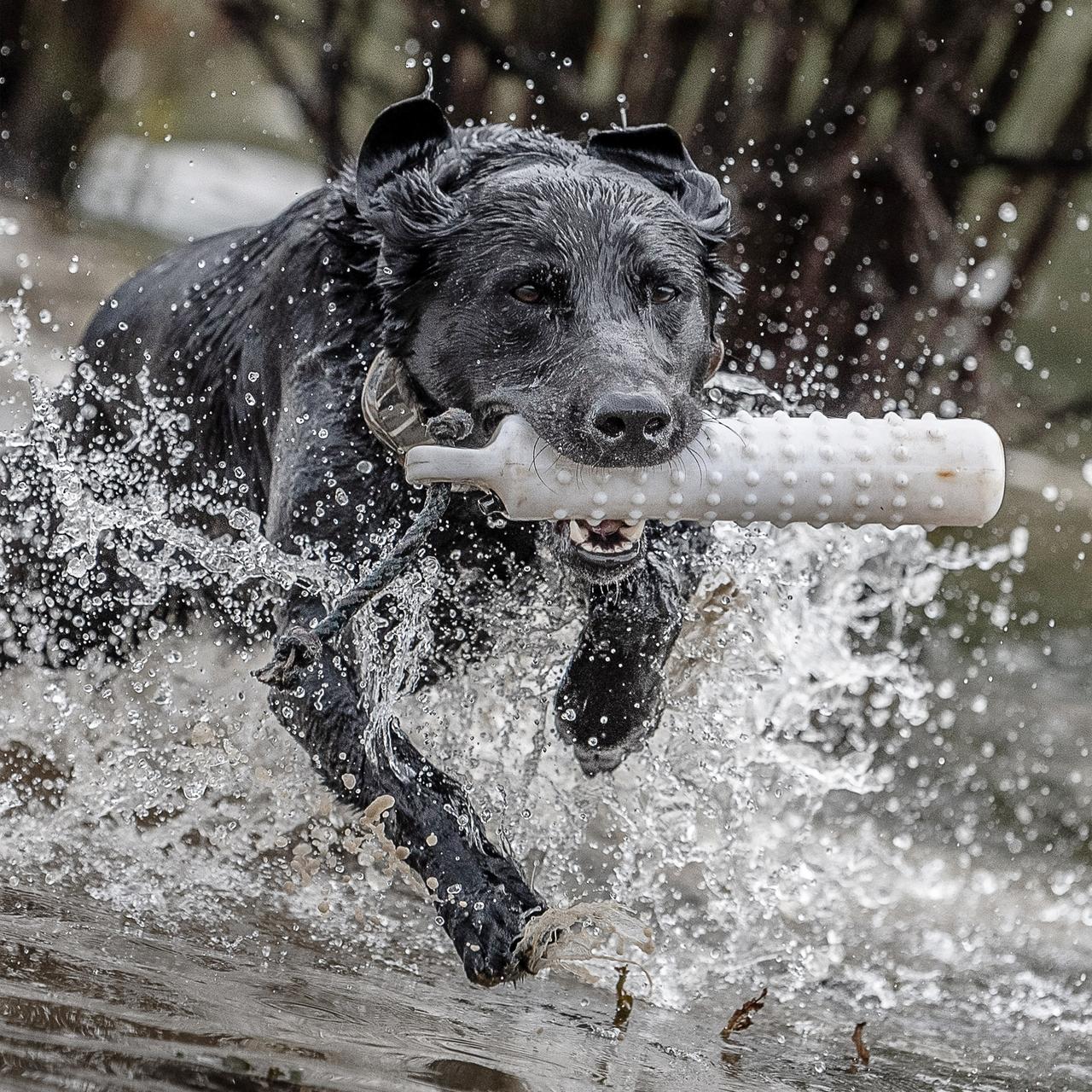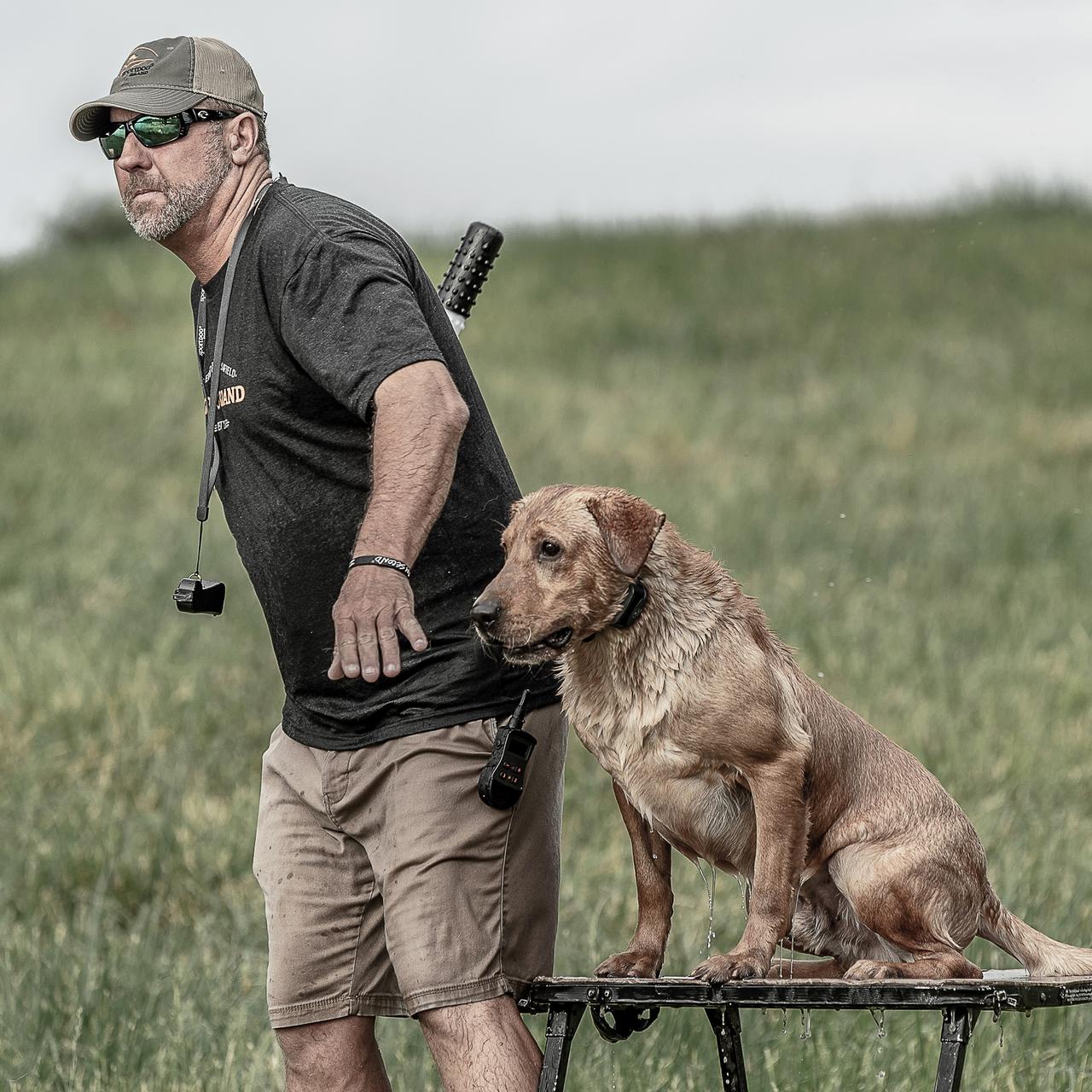
A Great Summertime Water Exercise for Retrievers
Posted by Chris AkinIf you have a young retriever and you’re looking for a great summertime training exercise, I’ve got one that’s super-simple but is also productive and educational for both you and your dog.
The drill I’m going to describe is quite basic as a 'de-cheating' method, but it actually accomplishes much more than that. What is de-cheating? Most retriever trainers use that term when they’re talking about training to ensure that their dog runs or swims a straight line on the way out to a bird and takes that same line on the return.
Your dog should run and/or swim in a straight line in the direction you send it rather than deciding on its own how to get to a bird. If you’re training a dog for a working test or field trial, you’ll want to demonstrate that your dog follows your directions because you’re in control. A dog that runs around cover instead of through it, or runs along the bank as far as possible before jumping into the water, isn’t really doing what you’ve directed it to do.
If you’re a hunter, you might say 'so what', as long as my dog retrieves the bird, that’s all that matters. That’s fine if that’s your decision, but I would imagine that if you want your dog to be the best it can be, you’d want to work on exercises that help you communicate with and direct your dog more effectively to follow your commands, rather than relying on luck.
My anti-cheating drill accomplishes several things. Firstly, it gets you comfortable with using your SportDOG Brand e-collar. I meet a lot of retriever enthusiasts in my training seminars who are afraid to press the transmitter button for fear of ruining their dog. This drill will help you get over that.
Secondly, this is an enjoyable exercise to do in the summer. Water training is a safe method to exercise your dog when it’s hot without the risk of overheating.
Lastly, this forces your dog to really pay attention to your commands as it learns to respect you and the e-collar.
One very important note: Before you start this exercise, your dog must have already been introduced to the e-collar. This means 1.) Your dog must understand that obeying a command is the way to switch off the correction, and 2.) You have ascertained the minimum level of e-collar pressure required to elicit a response from your dog. We offer numerous articles and videos here on the SportDOG Brand website to assist you in learning the correct techniques for introducing your dog to an e-collar.
It’s best to run this exercise on a square pond, or at least one that has well-defined corners. I use a pond that’s about 50 yards square. Here’s how the drill works …
Start at one corner with your dog sitting at heel. Toss a dummy out towards the middle of the pond. This isn’t meant to be a challenge; it’s just an initial warm-up swim. (I’m assuming here that your dog has already been introduced to water and genuinely enjoys retrieving in it. If not, you aren’t ready for this exercise.) Now, with your dog sitting at heel again, do another toss, but this time throw the dummy 20 to 25 yards parallel with the shore so it lands about 5 feet or so from the bank.
Now, when you send your dog, it’s very likely that it will run around the edge of the pond and down the bank to get to the bumper. No big deal. It’s natural for a dog to want to take the least amount of water necessary to make the retrieve, and at this point you’re not going to do anything to correct it. But what happens next is super-important in the de-cheating process.
It’s quite predictable that after your dog jumps in for what is now a very short retrieve, it will exit onto the bank so it can run down the shore to get back to you. As soon as its paws touch the shore, you’re going to start nudging it with the e-collar at the lowest level you know your dog can feel. To be on the safe side, let’s assume that’s a Level One. As the dog is running back towards you, you’re going to keep pressing the transmitter button: bump, bump, bump… until the dog has returned all the way to you. That experience should have been uncomfortable for the dog, but not to the extent that it disrupts the retrieve.
Next, repeat the original throw towards the middle of the pond. Your dog will have no choice but to swim out to the bumper and swim back. There’s no opportunity to cheat because the shortest path out and back is in the water. No pressure this time on the way back. All fun.
Now, repeat your original shoreline throw. Once again, your dog will probably dash down the bank as before. (That’s not a worry at this stage. The last thing you want is to start exerting pressure on the way out and cause your dog to become reluctant to retrieve.) And once more, as soon as it cheats by leaving the water to run the shoreline back to you, begin that repeated low-level bump-bump-bump. After doing this a couple of times, you’re going to notice that your dog is beginning to think. It’s a change in the ears or the way it holds its tail that's signalling a thought that, if dogs could articulate like humans, would be something along the lines of: 'This isn’t as enjoyable when I dash down the shoreline, and I don’t experience any collar pressure when I’m in the water. Perhaps I should return through the water.'
What makes a drill like this possible is the ability to use any SportDOG collar at ultra-low correction levels. Low-level correction lets you communicate pressure to your dog without distracting it from completing a task. Bear this in mind: Uncomfortable, good. Upset, bad.
If it seems like your dog isn’t responding to the correction level, you might need to go up one. That’s alright, because all dogs are different, and they respond to varying levels of e-collar stimulus. However, as with any use of the e-collar during any training, you should be trying to use the lowest level that elicits a response.
Now, let's fast-forward to when you know your dog 'gets it.' Because you're using a four-cornered pond, you can get eight different shoreline retrieves from it. Move from corner to corner, using each of the shorelines from each corner. If things are breaking down, mix in those tosses towards the centre of the ponds as a reminder that there's no pressure in the water.
The reason I really like introducing retriever trainers to this drill is that it accomplishes so many things at once. It gets you used to using the e-collar properly, it helps you understand at what level your dog responds best, and it forms the basis for building a retriever that runs and swims in straight lines. And there's no better time to work on this than during the height of summer, so go ahead and get started!

Chris Akin
Jonesboro, AR
Chris has spent most of his life duck shooting or training in the field. Over the years, his programme evolved into one of the most accomplished hunt test programmes in the country. Webb Footed Kennels, Ltd has produced more than 350 Hunting Retriever Champions, 175 Master Hunters, and 35 Grand...
Related Products

